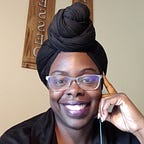This is what I think about…invisible identities of disability
One of my unique perspectives is being an Autism mom of a pretty amazing child. When people meet us they say I could not tell he was “Autistic” or “has autism” or whatever people say. I don’t get offended because it is always an opportunity to educate. However, I do get offended when they whisper, “Is he autistic?” because it suggest an underlying mindset that something wrong or I or he should feel less than. Absolutely not! To reiterate there is nothing wrong. There is just simply difference.
In this instances, I immediately respond that you don’t have to whisper. I am a proud Autism mom. Then I introduce my “worldchanger” and share a few of the many traits I am proud of. They are surprised my child enjoys learning, taught himself to ride a hoverboard, loves learning about ocean animals and astronauts, traveled on planes, went to DisneyWorld 2x, and celebrated his birthday on a 5 day birthday cruise and got to see beautiful dolphins in Cozumel. Then enters the shift. You know, the “Wow. I have not met anyone with your story.” Our conversation morphs into me sharing tips and best practices from sensory diet to equine therapy to shift the adult’s mindset about what kids can do. Right there in the grocery store line, library, mall or wherever.
It got me to thinking about the experiences of folx with visible and invisible identities in all spaces and why it is important to educate as many as possible. In our world, here is what is important to know:
- Examine the root cause of your beliefs about invisible disabilities.
- Reach out and meet families, caregivers, students and adults with disabilities and ask genuine questions.
- Learn about different abilities and strategies that support.
- Assume ability mindset instead of a deficit mindset about disabilities.
- Consider new ways you can be an advocate for those with disabilities.
- Recognize gaps that exists in your current employer that need to be changed.
- Offer support for families and caregivers of those with visible and invisible identities.
- Volunteer with organizations that are actively supporting children and adults with disabilities.
- Donate or join organizations that actively supporting children and adults with disabilities.
I have spoken at NASA and the Autism Summit, served on the board of the Autism Society, answer questions in groups and address issues of race and disability. I also started Worldchanger Homeschool during the pandemic and have supported 1,800 families. At the end of the day, children and adults with invisible disabilities are entitled to the same respect as those who present like me-without a disability. We just need to take time to open ourselves up to learning about others. When we do so we learn how authentic connections bridges divides that need to be broken down at every level.
I am LaTonya Davis and I am CEO of LaTonya Davis Consulting, LLC. I offer speaking, workshops and coaching via TonyaDavis.com. You are welcomed to follow me on LinkedIn or @TonyaDavisTalks. Thank you for reading this blog.
